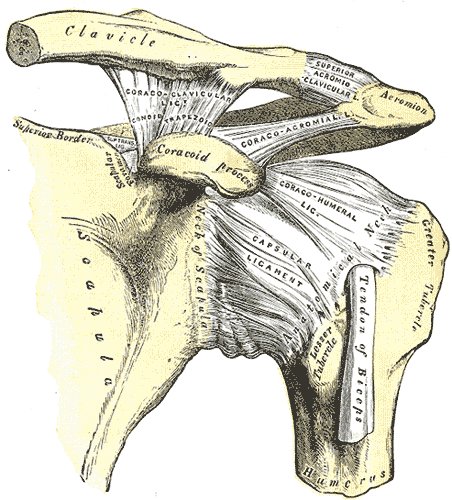- Home
- About Us
- TSPT Academy
- Online Courses
-
Resources
- Newsletter
- Business Minded Sports Physio Podcast
- Day in the Life of a Sports PT
- Residency Corner
-
Special Tests
>
-
Cervical Spine
>
- Alar Ligament Test
- Bakody's Sign
- Cervical Distraction Test
- Cervical Rotation Lateral Flexion Test
- Craniocervical Flexion Test (CCFT)
- Deep Neck Flexor Endurance Test
- Posterior-Anterior Segmental Mobility
- Segmental Mobility
- Sharp-Purser Test
- Spurling's Maneuver
- Transverse Ligament Test
- ULNT - Median
- ULNT - Radial
- ULNT - Ulnar
- Vertebral Artery Test
- Thoracic Spine >
-
Lumbar Spine/Sacroiliac Joint
>
- Active Sit-Up Test
- Alternate Gillet Test
- Crossed Straight Leg Raise Test
- Extensor Endurance Test
- FABER Test
- Fortin's Sign
- Gaenslen Test
- Gillet Test
- Gower's Sign
- Lumbar Quadrant Test
- POSH Test
- Posteroanterior Mobility
- Prone Knee Bend Test
- Prone Instability Test
- Resisted Abduction Test
- Sacral Clearing Test
- Seated Forward Flexion Test
- SIJ Compression/Distraction Test
- Slump Test
- Sphinx Test
- Spine Rotators & Multifidus Test
- Squish Test
- Standing Forward Flexion Test
- Straight Leg Raise Test
- Supine to Long Sit Test
-
Shoulder
>
- Active Compression Test
- Anterior Apprehension
- Biceps Load Test II
- Drop Arm Sign
- External Rotation Lag Sign
- Hawkins-Kennedy Impingement Sign
- Horizontal Adduction Test
- Internal Rotation Lag Sign
- Jobe Test
- Ludington's Test
- Neer Test
- Painful Arc Sign
- Pronated Load Test
- Resisted Supination External Rotation Test
- Speed's Test
- Posterior Apprehension
- Sulcus Sign
- Thoracic Outlet Tests >
- Yergason's Test
- Elbow >
- Wrist/Hand >
- Hip >
- Knee >
- Foot/Ankle >
-
Cervical Spine
>
- I want Financial Freedom
- I want Professional Growth
- I want Clinical Mastery
|
A couple months ago, we posted about the diagnosis and management of Lumbar Extension-Rotation Syndrome. The use of Shirley Sahrmann's Diagnosis and Treatment of Movement Impairment Syndromes text can be extremely useful in identifying the original fault in a patient's injury. Some of the more common shoulder pathologies, like shoulder impingement and rotator cuff tears, actually can result from a movement impairment syndrome. Recently, I have come across a couple patients that did not present like the typical subacromial impingement or rotator cuff tear. After looking at the patient's movement patterns, I recognized a link between the impairments and dysfunction of superior humeral glide syndrome, leading to the proper treatment.
Alignment: -Flattened deltoids -Arms in abduction relative to scapulae. Associated with downwardly rotated scapulae. When scapula position corrected, humerus is in abduction. -Hypertrophied deltoid Movement Impairment: -During GH flexion or abduction, note excessive movement of head of humerus superiorly against acromion. More evident in abduction. -Humeral superior glide more evident during active abduction versus passive. -Decreased GH crease noted just distal to acromion with arm overhead. Impairments: -Decreased inferior glide and lateral distraction of GH joint. -Short subscapularis and lateral rotators, supraspinatus, deltoid. -Weak rotator cuff muscles. -May find positive tests for rotator cuff tears and impingement. -Often associated with scapular downward rotation syndrome. So how does this happen? With elevation of the humerus, there tends to be over-activity of the deltoid muscle and decreased activity of the rotator cuff muscles responsible for inferior glide of the head of the humerus. If you are able to either increase deltoid activity or increase rotator cuff activity, a decrease in pain will be noted. While we should treat every patient based on the impairments they present with, I will list some of the important treatments I have found based on common impairments with this syndrome. Mobilization of the inferior capsule of the GH joint is necessary due to the excessive superior glide and lack of inferior glide. Exercises to restore the scapular fault are important as that provides the base for the shoulder. Since this syndrome is often associated with scapular downward rotation, I like to do standing wall shrugs to improve upper trap function. This must be coupled with decreasing the downward force the arms play on the humerus. It can be done by crossing arms against chest when unsupported or using well-positioned arm rests. Rotator cuff exercises are important as well. Sahrmann recommend using prone ER in 90 deg of abduction to improve infraspinatus and teres minor function. This helps to decrease posterior deltoid activity, unlike shoulder ER in adduction. Supine shoulder IR/ER can be used to regain shoulder mobility but I recommend it be done in 90 deg abduction again to limit deltoid activity. Finally, another exercise Sahrmann recommend is sliding ulnar borders of hands up on wall above head and then exerting a downward force to depress the head of the humerus. Hopefully this helps in identifying patients that you come across with this syndrome! For more information, check out Sahrmann's Diagnosis and Treatment of Movement Impairment Syndromes. -Chris Reference:
Sahrmann SA. Diagnosis and Treatment of Movement Impairment Syndromes. St. Louis, MO: Mosby. 2002. 234-236. Print.
1 Comment
10/19/2022 07:18:06 am
anks for sharing the article, and more importantly, your personal experience of mindfully using our emotions as data about our inner state and knowing when it’s better to de-escalate by taking a time out are great tools. Appreciate you reading and sharing your story since I can certainly relate and I think others can to
Reply
Leave a Reply. |
Dr. Brian Schwabe's NEW Book in partner with PaleoHacks!
Learn residency-level content on our
Insider Access pages We value quality PT education & CEU's. Click the MedBridge logo below for TSPT savings!Archives
July 2019
Categories
All
|







 RSS Feed
RSS Feed